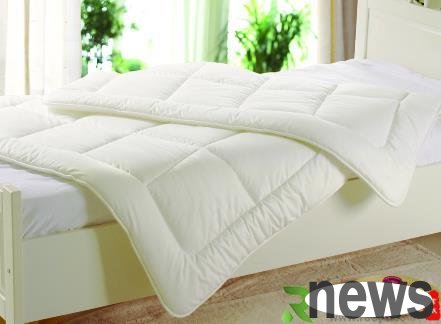The quilt will retain some human dandruff, sweat, etc. Even if it is a clean quilt that is not sunburned for three consecutive months, millions of mites will breed inside, and the ultraviolet rays in the sun can effectively sterilize. In addition, b...
The quilt will retain some human dandruff, sweat, etc. Even if it is a clean quilt that is not sunburned for three consecutive months, millions of mites will breed inside, and the ultraviolet rays in the sun can effectively sterilize. In addition, because various artificial boards and wooden furniture contain chemical substances such as formaldehyde, over time, the quilt placed inside will absorb a large amount of free formaldehyde. So, choose a sunny day and take the quilt to the sun to dry. It will not only kill the harmful microorganisms in the quilt, but also make the cotton fibers stretch and fluffy, allowing you to fall asleep under a soft quilt with "sun smell" “

Is it good to frequently dry quilts? How to dry the quilt? You can't slap the quilt when drying
However, the quilt is not just for drying it, and there is also knowledge in it. The most important thing is that you cannot dry it for a long time or frequent period, otherwise the fibers of the quilt will be shortened and easily fall off. How should quilts be sunburned? It is best to choose the best time to dry it at noon when the sun is most sunny. The quilt with chemical fiber fabric as the inside and the surface of the quilt should not be exposed to the sun in the sun to prevent the chemical fiber from being damaged to prevent the temperature from being damaged. When drying, a layer of cloth can be covered on the quilt to prevent the sun from being directly exposed to the sun. It can not only protect the surface of the quilt from being damaged, but also prevent the fiber from being damaged to being damaged at the too high temperature.
Down quilts have good moisture absorption and moisture removal performance, and down quilts and wool quilts should not be exposed to the sun. If you are outdoors, you need to cover them with a cloth and dry them in a ventilated place such as the balcony for 1 hour, or in a cool place for an hour.
When drying quilts, you should also pay attention to the following details:
First, the quilt can be directly dried. From 11 a.m. to 2 noon, the sun is the most abundant. If you dry the quilt during this period, the cotton fiber will expand to a certain extent.
Secondly, chemical fiber fabrics or quilts with mixed fiber fabrics should not be exposed to the sun, because chemical fibers will release chemicals at high temperatures for a long time. This type of quilt can be covered with a thin cotton cloth first and then dried to protect the quilt from damage. In addition, the wool quilt and down quilt have very good hygroscopicity and moisture removal properties, and it is best to cover a piece of cotton when drying.
If it is a synthetic cotton quilt, it will only take one or two hours to dry, because this quilt has no fiber expansion, and it can remove the moisture in the quilt by a little drying. The quilts of down, synthetic fiber and wool should not be dried for a long time, because high temperatures will cause the oil in the feathers and wool to change, resulting in a rotten smell, so it can be placed in a ventilated place for about 1 hour. In addition, do not take pictures when drying quilts, as they can easily destroy the ingredients of the quilts and will also affect keeping warm.
Finally, do not slap the quilt when it is sunburned. Because the fibers of cotton are thick and short and easy to break, if you beat them hard, the fibers will turn into cotton dust and run out; synthetic fibers are generally thin and long and easy to deform. Once the fibers shrink and are not easy to restore after being beaten, they become a piece of slatted; down quilts cannot be beaten, otherwise the down will break into a small “ feather dust ” thus affecting the warmth effect. In addition, after the quilt is slapped, dust on the surface and mites will fly up, which can easily cause allergic reactions. So, just brush with a brush to remove dust.
It is necessary to remind you that you should frequently dry the quilts when removing mites, and wash and change them frequently. You should know that if you don’t dry the quilt for more than three months, there will be 6 million mites in the quilt, but sunburning the quilt is not an effective way to remove mites.
Mite grows inside the surface of the quilt. Damping the quilt will only make the mites drill into the quilt. If you take pictures again, it will only make the mites' corpses and excrement into powder, which will increase allergens. Therefore, the quilt should not only be dried, but also cleaned frequently. Don’t forget to add some disinfectant when cleaning. This way, the quilt that has been sun-dried is not only clean and hygienic, but also has a faint sunlight smell.